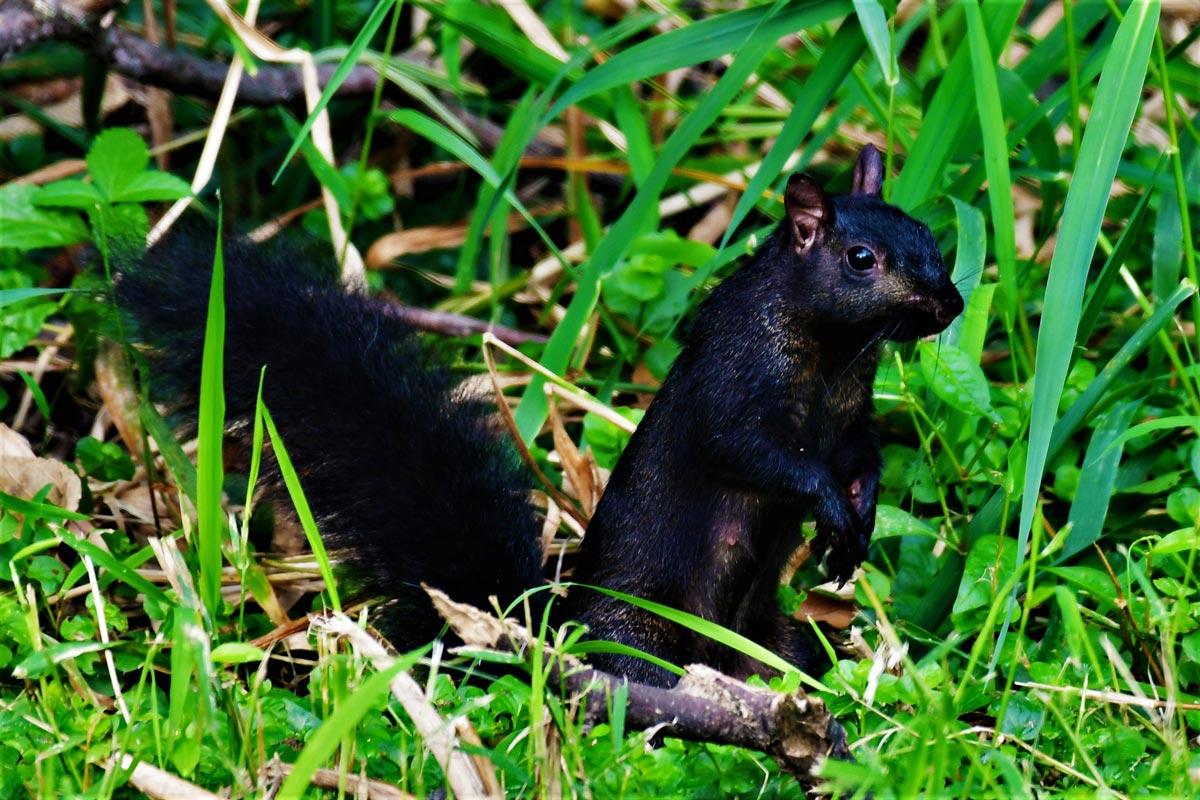Have you seen any black squirrels in the preserves?

Squirrels running up trees, across the paths or simply chilling off in the distance are nothing new when you're in the preserves. They're a dime a dozen. That is, unless it's a black squirrel.
Of the hundreds of entries that were submitted in the September portion of the Preserve the Moment Photo Contest, one photo in particular from Romeoville resident Mark Hanna caught our eye thanks to the incredibly rare subject matter.
Black squirrels can be fairly common in some areas along the Illinois-Wisconsin border where they account for up to 10 percent of the population, but it's a much different story in Will County. No hard data exists on the local black squirrel population, but anecdotal evidence indicates this one at McKinley Woods – Frederick's Grove in Channahon is indeed a rare find.
"In 24 years of spending time in our preserves and elsewhere in Will County, I have never seen one," said Dave Robson, the Forest Preserve District's Natural Resource Management Supervisor.
Additionally, the District's extensive database of wildlife photos taken both by staff members and volunteers over the years turns up zero black squirrels.
Hanna said the sighting got him "a little excited," because while he has seen black squirrels in the Upper Peninsula of Michigan, he hasn't seen many in Will County.
"The one in the photo was the only one I saw," he said. "I have been back there a few times since then, but I have not seen it again."
These unique little critters aren't a different species but, in fact, are gray tree squirrels or fox squirrels with a genetic mutation. In addition to the mutation resulting in black fur, some claim it also causes them to be more aggressive toward the "normal" squirrels.
Dr. Helen McRobie, the founder of the Black Squirrel Project, disagrees. According to her, any such aggressive behavior being displayed by the black squirrels against others is "more likely to be age or size-related."
"There is no evidence of different colour behavior at all," she told the Mirror. "People look out of their window and generalize about the entire population."
What does this sighting mean locally?
Any potential increase in the black squirrel population doesn't mean much for the rest of the squirrels.
"From a local ecosystem perspective, I don’t think the dominance or lack thereof of the melanistic phenotype will have much influence," Robson said. Melanism is a development of the dark-colored pigment melanin and is the opposite of albinism.
However, an increase in the black squirrel population could point to other significant changes going on in the forests.
"It is believed that tree squirrels were predominately black prior to European settlement of the eastern U.S. when the forests were thick and much less light penetrated the canopy," Robson said. "The black fur made it more difficult for predators to see them in the low light conditions than they would have been if they were lightly colored. As the forests were thinned and light levels increased, the fur of the squirrels evolved to be predominately lighter (and) what we consider to be a normally colored gray tree squirrel, to more effectively blend into the habitat.
"So, an expanding population of black squirrels within a given woodland could provide additional evidence that the tree and shrub density within that woodland has increased over time, or vice versa."
Help us track any population shifts
Robson said he is interested in charting data on any black squirrel sightings, so we'd like members of the public to let us know when or if they've seen a black squirrel in and around a forest preserve. Reach out to us on Facebook, Twitter or Instagram to let us know where and when the sighting took place. You also can join the Will County Wildlife Facebook group and post a photo there.
District staff will then attempt to confirm the reported sighting and then enter it into our ecological database.
"This will allow us to not only document the occurrence of the genetic mutation, but also to track its expression over time," Robson said. "As other reports are received, over time we will be able to determine if the melanistic subgroup is displacing other tree squirrels or if they are declining."
